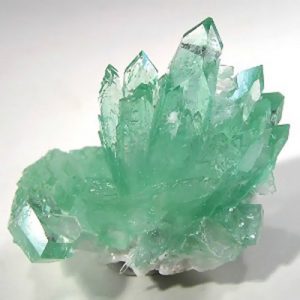Apophyllite
According to the IMA, Apophyllite isn’t really a mineral. The IMA not any longer acknowledges Apophyllite as an official, specific mineral title but only as the name of the group of minerals. The IMA approved names for these minerals are Apophyllite-(KF), Apophyllite-(KOH) and NaF that is apophyllite-(). Some refer to them as Fluorapophyllite, Hydroxyapophyllite and Natroapophyllite correspondingly. I will continue to refer to these mineral specimens and gems simply as Apophyllite though. Apophyllite-(KF) is through far the absolute most abundant and colourful of the 3 and is usually what exactly is referred to when a mineral gemstone or specimen is labelled “Apophyllite.”
Apophyllite is excessively rare as a gem since it is really brittle and fragile, with an exceptionally perfect and cleavage that is easy. Colourless Apophyllite gems are so devoid of any trace of colour that they almost appear silvery. The green, iron-rich Apophyllite from India occurs in beautiful crystal groups.
There are lots of localities worldwide for finding Apophyllite, but exceptional colourless and crystals that are green present the Ahmadnagar, Bombay, Jalgaon, Nasik and Poona Districts, Maharashtra, India.
| Category: | Phyllosilicate |
| Chemical Formula: | KCa4Si8O20(F, OH) • 8(H2O) |
| Hydrated Potassium Calcium Sodium Silicate Fluoride Hydroxide | |
| Molecular Weight: | 760.47 gm |
| Composition: | Potasium | 4.37 % | K | 5.26 % | K2O |
| Sodium | 0.45 % | Na | 0.61 % | Na2O | |
| Calcium | 21.08 % | Ca | 29.50 % | CaO | |
| Silicon | 29.55 % | Si | 63.21 % | SiO2 | |
| Hydrogen | 0.01 % | H | 0.12 % | H2O | |
| Oxygen | 42.29 % | O | |||
| Fluorine | 2.25 % | F | 2.25 % | F | |
| – % | F | -0.95 % | -O=F2 | ||
| 100.00 % | 100.00 % | = TOTAL OXIDE |
| Crystallography: | Tetragonal – Ditetragonal Dipyramidal |
| Crystal Habit: | Crystals tabular to prismatic, to 20 cm, commonly pseudocubic with {100}, {001}, and modified by {111}; prism zone deeply striated || [001]; granular. |
| Twinning: | Rare on {111}. |
| Cleavage: | Perfect on {001}, Imperfect on {110} |
| Fracture: | Irregular/Uneven |
| Tenacity: | Brittle |
| Moh’s Hardness: | 4.5 – 5.0 |
| Density: | 2.33 – 2.4 (g/cm3) |
| Luminescence: | Usually none; some specimens may fluoresce pale green or yellow. |
| Radioactivity: | Barely Detectable; GRapi = 62.81 (Gamma Ray American Petroleum Institute Units) |
| Color: | Colorless, White, Pink, Pale Yellow, Green |
| Transparency: | Transparent to Translucent |
| Luster: | Vitreous, Pearly on cleavage {001} |
| Refractive Index: | 1.530 – 1.538 Uniaxial ( + ) |
| Birefringence: | 0.0020 |
| Dispersion: | High, may be anomalous |
| Pleochroism: | None |


